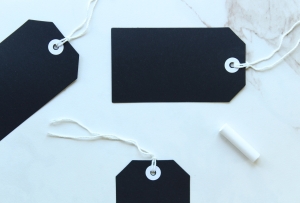What is a Canonical URL, and Why Should You Use it?
Duplicate content is a common problem that plagues the web. It can result in lower search engine rankings, decreased visibility, and more. Fortunately, canonical URLs and other webmaster guidelines can help combat this issue by allowing for the best possible version of a page to be indexed by search engines. With these tools, website owners can ensure their content is unique and high-quality – leading to improved visibility and higher rankings. The top-level domain (TLD) of the website’s URL, for example, is .com. Content hosted on a subdomain, also shown on the main domain, should have a specific canonical link pointing to the main website’s URL as http://www.example.com/a-page/.
The Benefits of Using Canonical URLs for SEO

Canonical tags are an essential tool for SEO when dealing with duplicate content. The canonical URL helps search engines identify the main version of a web page, so they can avoid indexing multiple versions of the same content. This allows search engine crawlers to focus on indexing only the original and most relevant version of a web page, helping to improve rankings and ensure that users see the best results possible. A tag that identifies which URL should be considered the canonical one. This tag will usually appear in an HTML head section of a web page. The canonical link tells search engines that the URL with this tag is authoritative (the original version) and should not be crawled by crawlers, while other URLs are not authoritative (not the original version) and should be crawled. For example, if a website has two URLs for similar content: http://www.example1.com/about- us.html and http://www.example2.com/about-us.html , search engines may reach out to the canonical URL (usually the original) for assistance in determining which page is an original version and which page is not, but if a website has only one URL for about-us, then search engines would recognize that this URL is the canonical link for about-us and would not crawl any others on this website because it has no others that are authoritative URLs.
How to Use Canonical URLs for Similar Content
Website optimization is essential for businesses to reach their full potential in the digital space. With the rise of SEO and search engine algorithms, it’s now more important than ever for businesses to stay ahead of the curve. One such technique is canonical tags, which helps search engines understand when two pages have similar content and helps optimize website ranking. With canonical tags, search engines can understand when two pages have similar content and help optimize website ranking by directing users to the more relevant page. Canonical tagging is also useful for mobile search rankings, as mobile devices often don’t allow users to view websites in large amounts of detail like computers do. Search engine spiders can crawl both pages identically but then give preferential treatment to the page marked as “canonical.” By implementing canonical tags on your website, you can ensure that your ranking remains high as search engine algorithms improve. There are many benefits of canonical tags, including the following:
Helps ensure that your website ranking is high.
Gives mobile devices preferential treatment for the most relevant page for the user’s query.
Helps Google understand that your website has a single, specific topic.
Can help prevent duplicate content penalties from search engines.
It can help optimize the taxonomy of your website.
When Not to Use Canonical Tags For Similar Content
Canonical tagging is an important part of SEO best practices, as it helps search engines better index and rank content. However, there are certain instances when the rel canonical tag should not be used.
The rel canonical tag should not be used:
When the page is a duplicate or near-duplicate of another page, the purpose of the rel canonical tag is to ensure that different pages are not confused by search engines and links are pointing correctly when the page’s purpose is to redirect or no longer exists.
When a URL is redirected, it has a different purpose and should not have a rel canonical tag.
When a page is created to redirect to another page, the page being redirected should be given the rel canonical tag only if it has content.
When the URL of the current page is still in use, but this content has been moved or removed.
When pages are no longer related, they should not have a rel canonical tag.
By understanding when not to employ the tag, copywriters can ensure that their content is properly indexed and ranked by major search engines without any issues.
Optimize Your Website with the Right Use of Canonical URLs Today!

Canonical URLs are essential for optimizing your website, ensuring the right page is displayed in search engine results. By using canonical URLs, you can make sure that search engines understand which version of a page to show in the search results. This helps you maximize your website’s organic visibility and rankings. With the right use of canonical URLs, you can also avoid duplicate content issues and ensure that users land on the correct page when they click on a link from another website. So, if you want to get the most out of your SEO efforts, it is important to optimize your website with the right use of canonical URLs today!